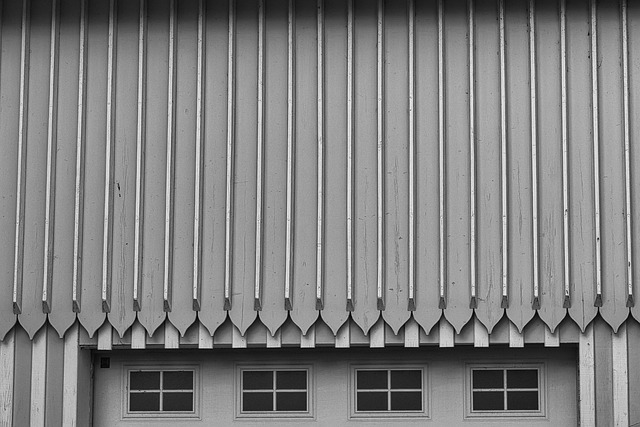Roofing services cater to both residential and commercial properties, offering diverse options tailored to specific needs. Residential roofs include affordable shingles, low-maintenance metal, insulating tile, and versatile flat roofs. Commercial roofing demands heavy-load capacity, harsh weather resistance, and UV protection, utilizing advanced materials like reinforced membranes and energy-efficient insulation. Installation involves meticulous site prep, underlayment, and proper material placement according to guidelines for longevity. Regular maintenance extends roof lifespans, with DIY repairs for minor issues but complex tasks requiring professional expertise. Eco-friendly solutions include reflective shingles and smart technology, promoting energy efficiency and sustainability. Before starting any project, research local regulations and permits to ensure compliance and avoid legal issues.
Roofing services are an essential aspect of any property’s maintenance. Whether for residential or commercial spaces, the roof plays a pivotal role in protecting against the elements and enhancing aesthetics. This comprehensive guide explores diverse roofing options, from understanding the types and materials for homes to navigating complex designs and structural considerations in commercial settings. We delve into installation processes, offer insights on maintenance, highlight energy-efficient solutions, and provide crucial information on local regulations and permits.
Understanding Residential Roofing: Types and Common Materials

Roofing services for residential properties encompass a wide range of options, each designed to offer durability, aesthetics, and energy efficiency. The most common types of residential roofs include shingle roofs, metal roofs, tile roofs, and flat roofs. Shingle roofs, popular for their affordability and ease of installation, are made from materials like asphalt, wood, or composite substances. Metal roofs, gaining popularity due to their longevity and low maintenance, are constructed from materials such as aluminum, steel, or copper. Tile roofs, often found in warmer climates, provide excellent insulation and a distinctive visual appeal with materials like clay or concrete tiles. Flat roofs, while less common, offer versatile design possibilities and require specialized installation for drainage and waterproofing.
Choosing the right material depends on various factors like climate, local regulations, architectural style, and personal preference. For instance, areas prone to heavy rainfall or snow may favor steep-sloped roofs with materials that handle high wind loads and provide better drainage. Conversely, regions with hot, dry climates might opt for reflective or light-colored materials that reduce heat absorption and lower cooling costs. Understanding these nuances ensures that roofing services selected align seamlessly with the specific needs and aesthetics of a residential property.
Commercial Roofing: Designs and Structural Considerations

Commercial roofing involves unique designs and structural considerations compared to residential roofing. Structures like skyscrapers, warehouses, and retail spaces demand roofs that can withstand heavy loads, extreme weather conditions, and prolonged exposure to UV rays. These roofs often feature flat or low-sloped surfaces, requiring specific materials and construction techniques tailored for durability and efficiency.
Roofing services for commercial properties must adhere to strict building codes and safety standards. They incorporate advanced technologies and materials, such as reinforced membranes, reflective coatings, and energy-efficient insulation, to ensure longevity, reduce maintenance needs, and minimize operational costs. These considerations are paramount in the dynamic urban landscape where robust and reliable roofing is essential for business continuity and tenant comfort.
The Installation Process: Step-by-Step Guide for Both Residental and Commercial

The roofing installation process involves several key steps, whether for residential or commercial properties. It begins with thorough site preparation, ensuring the area is clean and clear of any debris or obstructions. For commercial projects, this might include additional considerations like access to larger equipment and managing traffic flow around the construction zone.
Next, the underlayment is installed, providing a protective barrier between the roof deck and the shingles or roofing material. This is followed by the actual roofing material placement, which varies based on style and preference. For residential roofs, common choices include asphalt shingles, metal, or tile, while commercial roofs often opt for flat roof systems like EPDM (Ethylene Propylene Diene Monomer) or TPO (Thermoplastic Olifin Material). Each type has specific installation requirements regarding laps, flashings, and sealing to ensure water tightness and durability.
Maintenance and Repairs: When to Call a Professional

Roofing services are an essential aspect of maintaining any property, whether residential or commercial. Regular maintenance and timely repairs can extend the lifespan of a roof significantly. Homeowners should be vigilant for signs such as missing shingles, damaged gutters, or noticeable leaks, addressing these issues promptly to prevent further complications. A professional roofing service is best consulted when dealing with complex problems like structural damage from storms or snow, as they possess the expertise and equipment to assess and fix these issues safely and efficiently.
Additionally, while basic repairs like replacing a few missing tiles may be manageable for some DIY enthusiasts, most significant tasks should be left to experts. Professional roofers have access to high-quality materials that can better withstand environmental conditions, ensuring long-lasting repairs. They also guarantee their work, providing peace of mind and saving you from potential future expenses caused by shoddy repairs.
Energy Efficiency and Modern Roofing Solutions

In today’s eco-conscious world, energy efficiency is a top priority for homeowners and businesses alike. Modern roofing solutions play a pivotal role in achieving this goal. Advanced materials like reflective shingles and cool roofs are designed to reflect sunlight, thereby reducing the amount of heat absorbed by the building. This simple yet effective strategy can significantly lower cooling costs during hot summers.
Beyond material choices, innovative roofing systems incorporate smart technology. These include solar panels integrated into roof designs, offering both energy generation and reduced carbon footprint. Additionally, smart sensors and monitoring systems can detect leaks early, prevent damage, and optimize energy usage. Such advancements not only contribute to environmental sustainability but also provide long-lasting, cost-effective roofing services for residential and commercial properties.
Local Regulations and Permits: What You Need to Know Before You Begin

Before starting any roofing project, whether it’s for residential or commercial purposes, understanding local regulations and permit requirements is crucial. Each municipality has specific guidelines to ensure building safety and compliance with zoning laws. Failure to obtain the necessary permits can result in legal issues and delays in your project timeline.
Roofing services often involve significant structural changes to a property, so local authorities typically require detailed plans and inspections at various stages of construction. These permits guarantee that buildings meet safety standards and are designed and built according to specific codes. Therefore, it’s essential to research and contact your local building department to gather information on required permits and application procedures for your roofing project.
